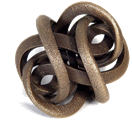Annotation:Rocket (The): Difference between revisions
No edit summary |
m Text replacement - "Century Gothic" to "sans-serif" |
||
| (One intermediate revision by one other user not shown) | |||
| Line 7: | Line 7: | ||
---- | ---- | ||
<div style="page-break-before:always"></div> | <div style="page-break-before:always"></div> | ||
<p><font face=" | <p><font face="sans-serif" size="2"> | ||
<div style="text-align: justify; direction: ltr; margin-bottom: 90px; margin-left: 70px; margin-right: 120px;"> | <div style="text-align: justify; direction: ltr; margin-bottom: 90px; margin-left: 70px; margin-right: 120px;"> | ||
<br> | <br> | ||
| Line 13: | Line 13: | ||
<br> | <br> | ||
<br> | <br> | ||
According to Wikipedia: "The name Rocket comes from the Italian ''rocchetta,'' meaning "bobbin" or "little spindle", given due to the similarity in shape to the bobbin or spool used to hold the thread to be fed to a spinning wheel. The Italian term was adopted into German in the mid 16th century, by Leonhard Fronsperger in a book on rocket artillery published in 1557, using the spelling ''rogete'', and by Conrad Haas as ''rackette''; adoption into English dates to ca. 1610. Johann Schmidlap, a German fireworks maker, is believed to have experimented with staging in 1590. | According to Wikipedia: "The name Rocket comes from the Italian ''rocchetta,'' meaning "bobbin" or "little spindle", given due to the similarity in shape to the bobbin or spool used to hold the thread to be fed to a spinning wheel. The Italian term was adopted into German in the mid 16th century, by Leonhard Fronsperger in a book on rocket artillery published in 1557, using the spelling ''rogete'', and by Conrad Haas as ''rackette''; adoption into English dates to ca. 1610. Johann Schmidlap, a German fireworks maker, is believed to have experimented with staging in 1590.'' | ||
<br> | <br> | ||
<br> | <br> | ||
| Line 20: | Line 20: | ||
<div class="noprint"> | <div class="noprint"> | ||
== Additional notes == | == Additional notes == | ||
<p><font face=" | <p><font face="sans-serif" size="2"> | ||
<font color=red>''Source for notated version''</font>: - | <font color=red>''Source for notated version''</font>: - | ||
<br> | <br> | ||
<br> | <br> | ||
</font></p> | </font></p> | ||
<p><font face=" | <p><font face="sans-serif" size="2"> | ||
<font color=red>''Printed sources''</font> : - Thompson ('''Compleat Collection of 200 Favourite Country Dances, vol. 3'''), 1773; No. 92. | <font color=red>''Printed sources''</font> : - Thompson ('''Compleat Collection of 200 Favourite Country Dances, vol. 3'''), 1773; No. 92. | ||
<br> | <br> | ||
<br> | <br> | ||
</font></p> | </font></p> | ||
<p><font face=" | <p><font face="sans-serif" size="2"> | ||
<font color=red>''Recorded sources'': </font> <font color=teal> - </font> | <font color=red>''Recorded sources'': </font> <font color=teal> - </font> | ||
</font></p> | </font></p> | ||
Latest revision as of 20:09, 6 May 2019
ROCKET, THE. English, Country Dance Tune (whole time). D Major. Standard tuning (fiddle). AABB. The melody was first published in Charles and Samuel Thompson’s Compleat Collection, vol. 3 (London, 1773). It is one of numerous melodies from the Thompson collection that were entered into the 1788 music manuscript copybook of fiddlers John and William Pitt Thompson (Norwich, Conn.).
According to Wikipedia: "The name Rocket comes from the Italian rocchetta, meaning "bobbin" or "little spindle", given due to the similarity in shape to the bobbin or spool used to hold the thread to be fed to a spinning wheel. The Italian term was adopted into German in the mid 16th century, by Leonhard Fronsperger in a book on rocket artillery published in 1557, using the spelling rogete, and by Conrad Haas as rackette; adoption into English dates to ca. 1610. Johann Schmidlap, a German fireworks maker, is believed to have experimented with staging in 1590.
